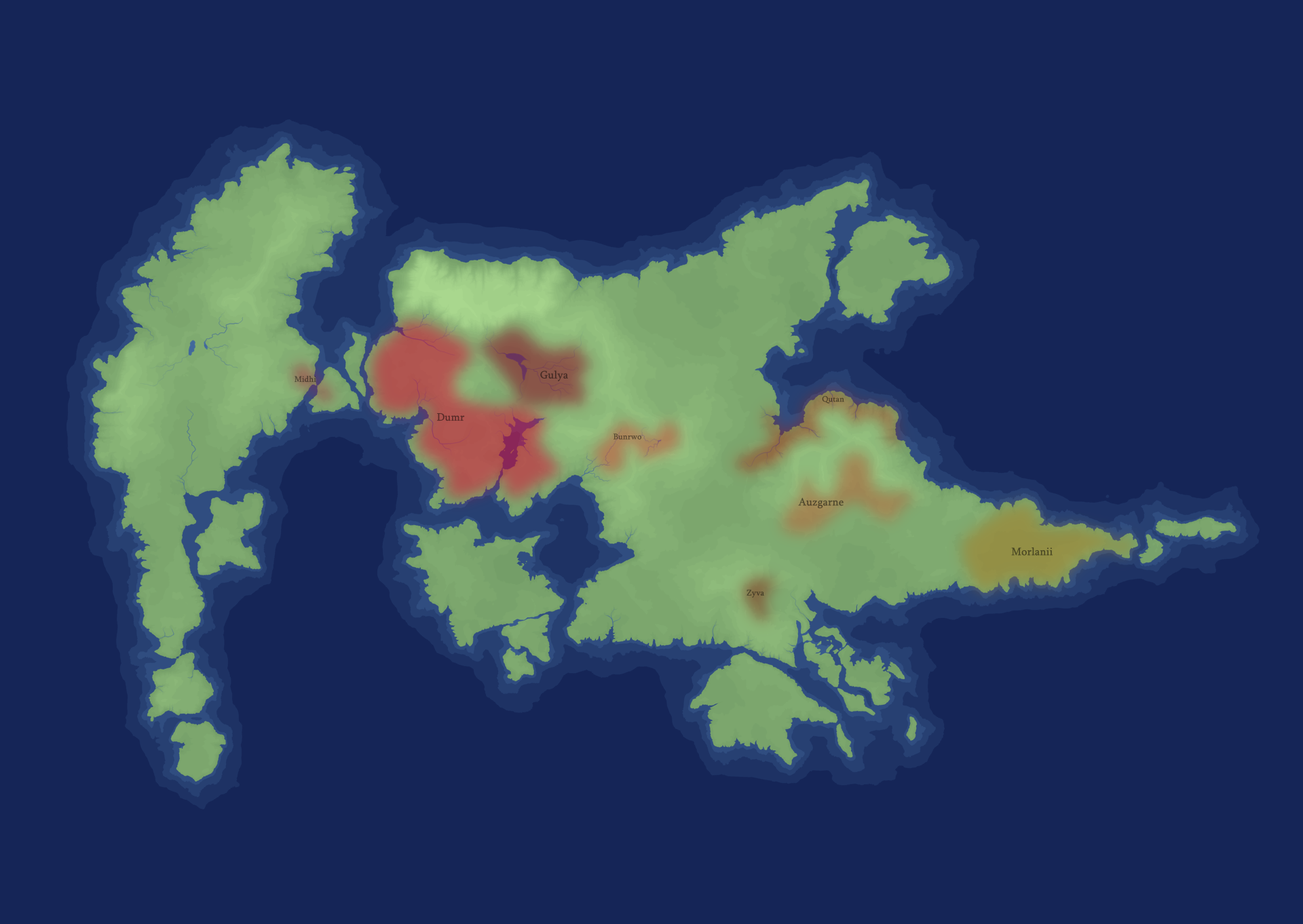Humans
Races| Humans | |
| Playable Race | |
| Source |
|
|---|---|
Description
Humans dwelt in almost every corner of Auriin, and encompassed a wide range of cultures. In Fëaforn and Morlan especially, humans were the most pervasive of the races, and in many places they were the most dominant.
Humans were famous for their adaptability. No other race lived in such a diverse range of environments, from the bitter cold beyond the North Gate, to the blistering dry heat of the deserts of Canolze. Humans' diversity was part of what lent them this adaptability, but was also the source of many conflicts between human communities throughout history.
Territory
The vast majority of settlements in Fëaforn and Morlan were predominantly human, but even those of other races were likely to be home to at least one family of humans. Only the proudest of dwarves and elves, and the most savage of the goblinoids, were likely to be unwelcoming to human settlers.

A map of Auriin depicting the distribution of Human cultures across the continent. [view enlarged]